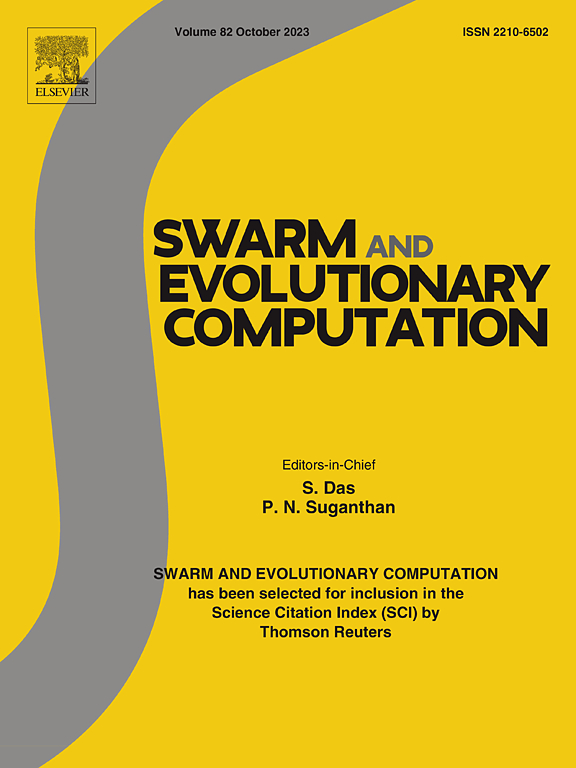An indicator-based multi-objective evolutionary algorithm assisted by improved graph convolutional networks
IF 8.2
1区 计算机科学
Q1 COMPUTER SCIENCE, ARTIFICIAL INTELLIGENCE
引用次数: 0
Abstract
Recently, graph convolutional networks (GCN) have attracted significant attention due to their superior performance in handling non-Euclidean spaces, which enables GCN to model and analyze complex data structures that cannot be handled by traditional methods. Neural network-based multi-objective evolutionary algorithms (NNMOEAs) have made significant strides, predominantly focusing on mapping the decision space to the objective space, but may fail to focus on the interconnectedness of solutions within the decision space. To address this problem, this paper proposes a two-stage multi-objective optimization algorithm that utilizes graph convolutional networks to enhance population evolution. In the initial stage, the algorithm employs cosine similarity to represent the population as graph-structured data. A hypervolume-guided self-attention update mechanism is then introduced to balance exploration and exploitation, achieved by establishing an exploratory neighborhood population alongside an expanded neighborhood population. In the subsequent stage, a key node detection strategy is implemented, which considers both the global influence and local mediation roles of nodes. This strategy selects individuals with highly concentrated information to generate new solutions, thereby facilitating a thorough exploration of the solution space. The proposed algorithm is evaluated against five state-of-the-art MOEAs across five benchmark test suites and five real-world problems. The experimental results demonstrate its superior performance in addressing robust, variable linkages and imbalance mapping multi-objective optimization problems, as well as its feasibility in practical problems.
求助全文
约1分钟内获得全文
求助全文
来源期刊

Swarm and Evolutionary Computation
COMPUTER SCIENCE, ARTIFICIAL INTELLIGENCEC-COMPUTER SCIENCE, THEORY & METHODS
CiteScore
16.00
自引率
12.00%
发文量
169
期刊介绍:
Swarm and Evolutionary Computation is a pioneering peer-reviewed journal focused on the latest research and advancements in nature-inspired intelligent computation using swarm and evolutionary algorithms. It covers theoretical, experimental, and practical aspects of these paradigms and their hybrids, promoting interdisciplinary research. The journal prioritizes the publication of high-quality, original articles that push the boundaries of evolutionary computation and swarm intelligence. Additionally, it welcomes survey papers on current topics and novel applications. Topics of interest include but are not limited to: Genetic Algorithms, and Genetic Programming, Evolution Strategies, and Evolutionary Programming, Differential Evolution, Artificial Immune Systems, Particle Swarms, Ant Colony, Bacterial Foraging, Artificial Bees, Fireflies Algorithm, Harmony Search, Artificial Life, Digital Organisms, Estimation of Distribution Algorithms, Stochastic Diffusion Search, Quantum Computing, Nano Computing, Membrane Computing, Human-centric Computing, Hybridization of Algorithms, Memetic Computing, Autonomic Computing, Self-organizing systems, Combinatorial, Discrete, Binary, Constrained, Multi-objective, Multi-modal, Dynamic, and Large-scale Optimization.
 求助内容:
求助内容: 应助结果提醒方式:
应助结果提醒方式:


